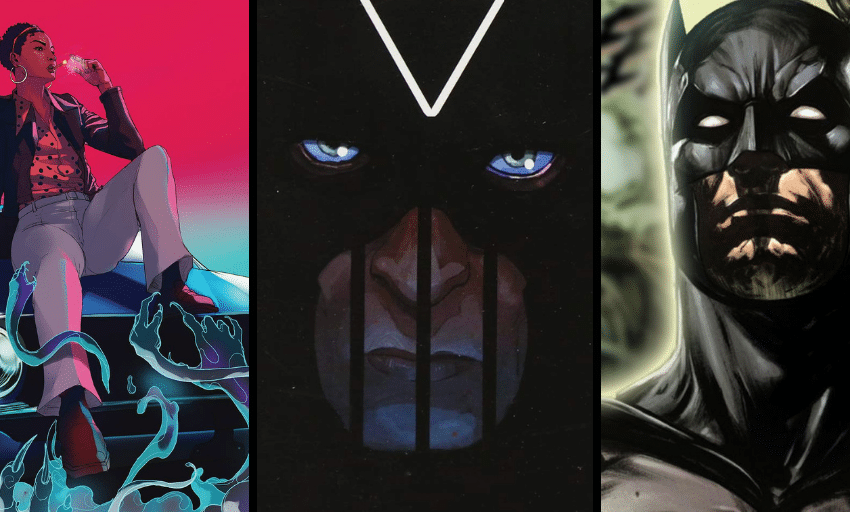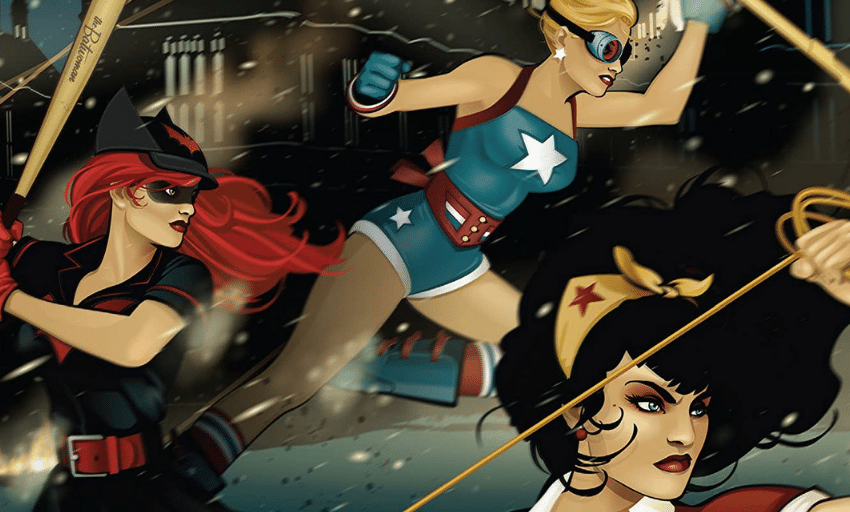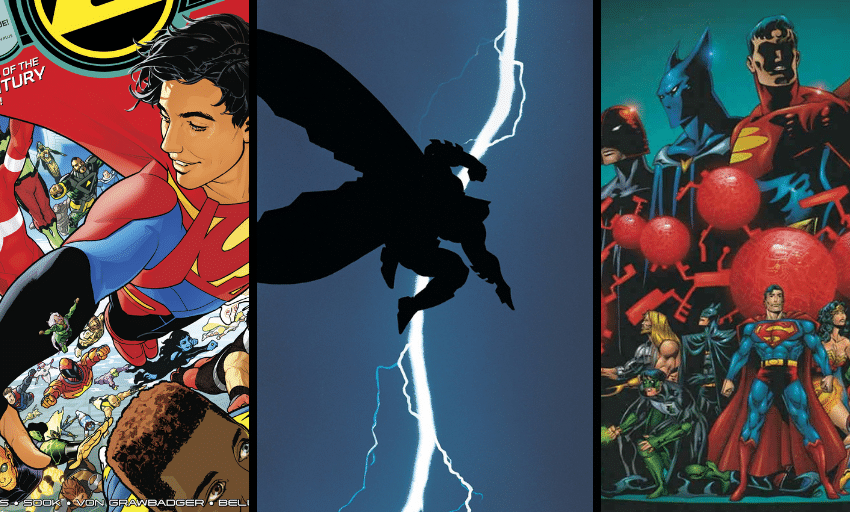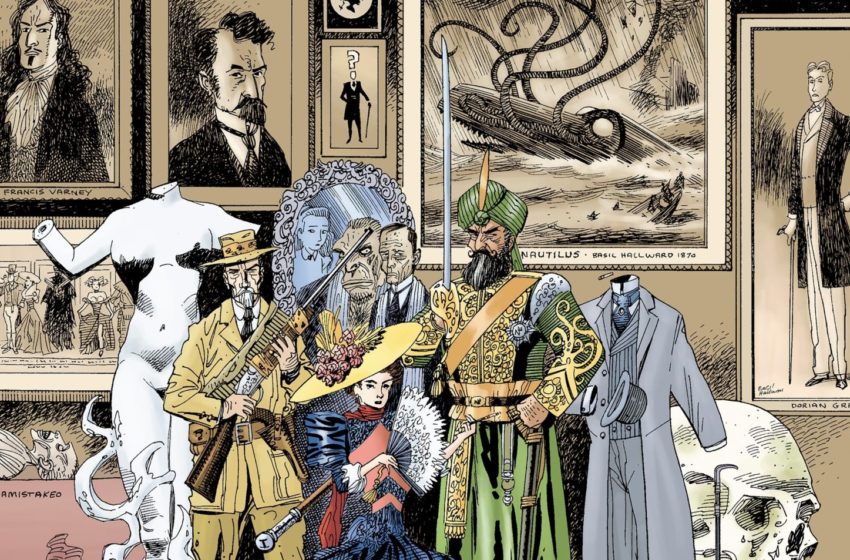Saladin Ahmed had a good 2020. Well, relatively anyway; I don’t know that anyone had a good 2020. His first Kickstarter, Dragon, was an unequivocal success. He’s continued his runs on Magnificent Ms. Marvel and Miles Morales: Spider-Man. And now he’s kicking off 2021 with Abbott: 1973, the sequel to his excellent creator-owned Abbott from 2018. So this week’s Bonus Reading looks at four stories written by Ahmed that are worth checking out.
Black Bolt

This is going to be Matt’s Hot Take #1 of this piece: I have never cared for the Inhumans. There have only been a handful of stories about them that have ever grabbed my attention: The Paul Jenkins/Jae Lee Marvel Knights series, the Jose Ladronn-drawn series and Silent War come to mind. Also anything where Lockjaw was the star; he’s a very big good boy. So I didn’t read 2017-18’s Black Bolt when it came out, in the middle of the glut of Inhumans stories where Marvel was trying to make them happen like they were fetch. And I am going to say this: I was absolutely wrong to skip this book when it came out, because it might be the best Inhumans story ever.
Black Bolt opens with the titular former king of the Inhumans in an ancient, hidden prison. The why is quickly explained as another machination of his evil brother, Maximus the Mad, but none of that matters. What we get is a deeply emotional story about hardship, friendship, regrets and whether being a criminal or a king makes you evil. The first six issues are the prison story, as Black Bolt and a collection of new and obscure Marvel characters attempt to escape the Jailer, a psychic vampire who runs the prison. It deftly balances character and action, and allows Black Bolt to speak due to power dampeners, so readers are able to more easily understand the usually silent king. Add in art from Christian Ward and Frazer Irving, both of whom have mind-bending styles that suit the trippiness of the prison’s cycles of death and rebirth and psychological torture, and you have a story that you can’t look away from.
I read this 12-issue series in one sitting, and I was a little worried that the back six weren’t going to be able to live up to the first, especially as Black Bolt returns to Earth in issue #8, and the series had to begin dealing with all the goings on in various other Inhumans comics. But while we get a fair amount of information about what is going with other characters in other books, Ahmed keeps the book focused on Black Bolt and his traumas and issues. Having brought back a young alien girl called Blinky as a foster daughter, a lot of time is spent with Black Bolt dealing with his conflicted emotions about his own son, Ahura. Readers also are treated to more fish-out-of-water stories as Black Bolt has to associate with characters he never would have in more traditional Inhumans stories.
And that brings me to the highlight of this series: the redemption of Crusher Creel, the Absorbing Man. I haven’t read a ton of Absorbing Man stories, but from what I have, he was just this sort of blue-collar supervillain who smashed stuff and fought Thor and the Hulk. This series, especially issue #4, dives deeply into the character, giving him motivation, explaining who he is and why he is. The series kills and resurrects him in a way that is absolutely satisfying and doesn’t feel like a cheat, and during the time he’s dead, readers are treated to meeting his wife, the supervillain Titania, and getting to see just how much these two love each other. This is a story that turns a C-list villain into a character you can root for, and that alone makes it worth the ride.
Abbott

Released by BOOM Studios, Abbott is a comic that exists outside genre. It’s so many different things that it can’t be easily classified. It’s a story about crime. It’s a story about race. It’s a period piece. It’s got queer themes. It’s got monsters and spirits. It’s everything you could want in a story.
Set against the backdrop of deep racial tensions in 1972 Detroit, Abbott stars reporter Elena Abbott as she investigates a series of deaths with a supernatural edge. The victims are a young Black man and a police horse, and frankly, the police care more about the horse, even if they just barely care about that. Elena is a Black woman in the 1970s, so sexism and racism are front and center, and Ahmed pulls no punches.
I’m going to try to be a bit more cagey about this particular book, for a couple of reasons. This column is to encourage you to pick up the sequel to this book, and this one, and while it’s a couple of years old, is a supernatural detective story. It hangs together even if you know the whodunnit, but a mystery is all the more fun if you don’t see what’s coming.
Aside from a compelling mystery and a well-researched and rendered setting, the thing that makes this book a stand out is its lead. Elena Abott walks onto her first page as a fully realized character, tough as nails, chain smoking and taking no shit from anyone. Over the course of the series, we see all the aspects of her character. She is caring. She reports to get to the truth and to defend her community. She is bisexual, and struggling with that. Being a woman and Black is hard enough; add in being queer in the ’70s, and that’s a whole other level of prejudice. Over the series, we meet an extended network of friends, allies and enemies. A rich character exists in a rich world.
Ahmed’s script does so much to make this story memorable, but a comic requires art to make it work, and the art in this series is as outstanding as the story. Sami Kivela is an astonishing artist, and while I bet he could draw anything, he has a way with period pieces. He drew one of our favorite books of 2020, Undone by Blood, or the Shadow of a Wanted Man, which is both a Western and a ’70s revenge drama, and the 1920s set urban fantasy Machine Gun Wizards for Dark Horse. Kivela, aided by colorist Jason Wordie, captures the period of this book perfectly. It’s gritty, it’s raw and it suits the series. But the art doesn’t sacrifice character for general aesthetic. Every person is distinct and well rendered, and most of all expressive, while still part of a well researched and presented world. Abbott is what happens when creators work at the top of their game together and give readers a comic that is not just a rollercoaster ride, but one you think about long after you’ve finished it.
‘Urban Legends’

Eight pages isn’t a ton of space to tell a story. That’s one of the things that makes short stories harder to write than longer-form storytelling. Credit where credit is due, DC has been doing a really good job the past few years with their seasonal anthologies, gathering legendary and new creators to tell perfect little short stories. And this past year’s Halloween special, DC: The Doomed and the Damned, featured “Urban Legends,” a treat of a Batman story from Ahmed, Leonardo Manco, Mike Spicer and Marshall Dillon.
Since this story is so short, the premise is quick to explain. At a boys’ home in Gotham, Cesar’s brother has gotten sick, and the doctors can’t explain it. Cesar is telling them it’s Mr. Slowdeath, a Bloody Mary-type figure who comes out of mirrors, drawn especially creepy by Manco, but no one believes him. Until Batman does. Cesar then says the name three times in front of a mirror, Batman defeats the negative-energy spirit and Cesar’s brother gets better. There you go, easy as pie.
What I like about this story is partially the economy of it. Ahmed wastes no time getting to the plot, but the details are there if you look for them. The boys’ home is “Martha’s House,” clearly named for Bruce Wayne’s mother, explaining why Batman has noticed the fact that a couple of kids have gotten sick, but other than the sign, no attention is called to this. A lesser writer would have hammered that home, but Ahmed lets it sit. He also has a nice callout of Batman using Nth metal knuckles to fight the spirit, something directly from episodes of a mostly much less creepy version of the character, the animated Batman: The Brave and the Bold.
The best part of the story, though, is Batman interacting with Cesar. Batman really believes this kid and listens to him like no other grown-up will. It’s so easy to write Batman as the hardass of hardasses. But so many people forget that under all that darkness and brooding is a deep well of empathy. Ahmed gets that, and shows why kids will always love Batman.
‘Rules of the Game’

OK, here’s Matt’s Hot Take #2: I really like The Last Jedi. The “problems” of the story existing in a gray space in a galaxy that usually exists in black and white aren’t problems for me. I have always enjoyed stories of Gray Jedi and Noble Imperials. And one of the sequences that tends to bother people a lot in the film is the one on the casino city of Canto Bight, where the difference between the First Order and the Resistance seems to slip away, as they both ignore the terrible conditions of the planet. So I wasn’t sure what to expect from a book of four short stories/novellas set on the planet. And what I really didn’t expect was a wacky crime story like Ahmed’s “Rules of the Game.”
“Rules of the Game” stars two characters who are tossed together by fate: Kedpin Shoklop and Anglang Lehet. Shoklop is the winner of a salesbeing of the year award, the prize being an all-expenses-paid trip to Canto Bight. He is somewhere between Willie Loman and Ol’ Gil Gunderson from The Simpsons. OK, he’s way closer to Gil than Loman. Lehet is an assassin who is setting out on that old trope: that one last job before he retires.
What follows is a comedy of errors. Immediately upon arriving in Cantonica, Shoklop has his luggage stolen by a con man and gets thrown into a mud bath by a hawker droid and a large being called “Sweetheart,” who charge him most of the money he was given to fund the whole trip. And although he arrives at his hotel, he is now low on pretty much everything. Seeing all of this, Lehet thinks this guy is an easy mark: He needs someone to get arrested so he can implant a bomb in them to blow up a crooked cop, and poor Shoklop seems the perfect mark.
Lehet sets everything up, getting Shoklop to ingest the detonator, planting drugs on him and getting him arrested, But when Shoklop won’t turn on him, since the only one who could have set him up was Lehet, the assassin has second thoughts, and instead springs Shoklop. The two wind up having a fight with the people who had hired Lehet initially, do some gambling and end the story together having a drink.
The story is clever and funny, which is not something you get from a lot of these Star Wars stories. It’s not galactic stakes, but instead two beings facing the galaxy and finding someone they can be friends with. There’s also a fun little twist at the end, something that plays into those moral grays that Canto Bight exists in, but I don’t want to spoil that. All you need to know is that sometimes, the house doesn’t win in the Star Wars universe, even if, in this case, the house is a pangalactic vaporator company.
Matt Lazorwitz read his first comic at the age of five. It was Who's Who in the DC Universe #2, featuring characters whose names begin with B, which explains so much about his Batman obsession. He writes about comics he loves, and co-hosts the creator interview podcast WMQ&A with Dan Grote.






